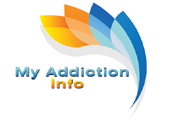
An Overview: What Is Crack?
What's In This Article?
What is crack? You may not realize how common this question is for people unfamiliar with illicit street drugs. Crack, which is crack cocaine, is a free-base cocaine form that can be smoked. Those who smoke it get an intense, but short high. According to the Manual of Adolescent Substance Abuse Treatment, crack is the most highly addictive cocaine form. Used as a recreational drug, it was first used widely in impoverished inner-city neighborhoods in the mid-1980s.
What Does Crack Look Like?
Beyond wondering what is crack, you may wonder what does crack look like. Because it is readily available, and use has increased, there is now what is called a “crack epidemic.” In its purer forms, crack rocks are an off-white color and appear as nuggets with jagged edges. Their density is slightly greater than candle wax.
The purest forms of crack resemble plastic that is hard and brittle and snaps when it is broken. A rock can be used as local anesthetic, numbing the mouth or tongue only where it is placed directly. When placed near a flame, pure crack will melt on the edges, and it will sink when put in water.
To increase bulk, crack sold in the streets are cut with other substances that look similar, so bulk is increased, and the seller can increase profits. Sometimes toxic products, such as levamisole, are used to cut the drug.
Effects of Crack
When answering “what is crack,” it is important to consider the effects of this stimulant street drug as well. Commonly used as a recreational drug, crack cocaine leads to insomnia, increased energy, alertness, euphoria, supreme confidence, loss of appetite, paranoia, and a craving for more of the drug.
When used, the initial effect is to release a large amount of dopamine, which is a chemical in the brain that induces euphoric feelings. The high from crack usually lasts a short time, only about 5 to 10 minutes.
After that, the dopamine levels plummet, with the user feeling low and depressed. When crack is dissolved then injected, the bloodstream absorption is as rapid as the results when it is smoked, so a similar euphoric feeling might be experienced.
Crack can increase blood pressure and heart rate, which can result in long-term cardiovascular conditions. Smoking crack might lead to additional health risks in comparison to other methods of using cocaine. According to studies, methylecgonidine is released when the drug is smoked, and it can affect the liver, heart, and lungs.
Why Do People Use Crack?
Beyond answering “what is crack,” you may wonder why people use crack, such a dangerous drug, in the first place. There are several reasons that crack is abused. Those who are users of the drug report they do so because of:
- The euphoric feeling
- The sense of escaping reality
- Increased ability to focus
- Inflated sense of self
- Increased self-importance
Just as with other abused drugs, the desired effects are quickly replaced with negative effects.
Signs and Symptoms of Using Crack
A very dangerous substance, crack is highly addictive. Any use of the drug should be taken seriously, as it cannot be used in a recreational or casual manner without the risk for addiction.
There are psychological and physical symptoms of crack use. Because of the intense high caused by the drug, crack is highly addictive. When it is used or smoked, users experience extreme euphoria, which makes everything they experience seem much more intense.
Often, users are overly alert or extremely energetic. When the drug wears off, the user feels the need to use more of the drug, because he or she is irritable, paranoid, agitated, and restless.
Physical and Psychological Signs of Crack Addiction
There are some physical signs of crack abuse that can alert family members and friends. Some physical signs of an individual using crack might include:
- Increased heart rate
- Dilated pupils
- Insomnia
- Weight loss
- Decreased appetite
- Twitching muscles
- Increased blood pressure
Some of the psychological signs of crack use include:
- Obsessive and persistent thoughts of using the drug
- Volatile mood swings
- Aggression
- Psychotic symptoms
- Paranoia
- Hallucinations
- Inability to stop using the drug despite the desire to do so
- Tendency to put obtaining the drug as a high priority
- Continuing to use the drug despite its impact on relationships, finances, and other aspects of life
When someone is willing to engage in dangerous, risky behaviors that cause problems to keep using the drug, then there is most likely an addiction to crack cocaine.
When there is tolerance built up for the amount of the drug that is smoked, that is a sign of persistent drug use. Tolerance results when your body adapts to the amount of the drug in your system, and it feels the need for larger and larger amounts of the drug. When tolerance manifests, larger amounts of the drug are used to overcome it and to feed the addiction.

